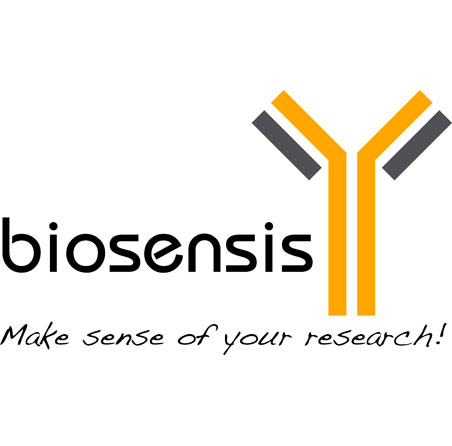NGFR/p75 neurotrophin receptor (p75NTR), Mouse Monoclonal Antibody
As low as
US$317.00
Only %1 left
Catalog Number
M-011
- Product Name NGFR/p75 neurotrophin receptor (p75NTR), Mouse Monoclonal Antibody
- Product Description Mouse anti-p75 neurotrophin receptor (p75NTR) Monoclonal Antibody (Unconjugated), suitable for IHC-Frozen.
- Alternative Names Low-affinity nerve growth factor receptor; NGF receptor; Gp80-LNGFR; p75 ICD; Low affinity neurotrophin receptor p75NTR; Tumor necrosis factor receptor superfamily member 16; CD271; NGFR; TNFRSF16;
- Application(s) IHC, IHC-Frozen
- Antibody Host Mouse
- Antibody Type Monoclonal
- Specificity This antibody recognises p75NTR (low affinity neurotrophin receptor) Reacts with human, cat, dog, pig, rabbit and sheep. Does not react with rat or mouse.
- Species Reactivity Cat, Dog, Human, Pig, Rabbit, Sheep
- Immunogen Description The p75NTR antibody was derived from immunization of mice with human WM245 melanoma cells.
- Conjugate Unconjugated
- Purity Description Immunoglobulin (IgG1) was purified using Protein G column (Amersham Pharmacia), polished with Sephacryl 200HR (Amersham Pharmacia) in PBS and then lyophilized. Purity was analysed using electrophoresis, 4-12% Bis Tris Gel (Invitrogen).
- Regulatory Status For research use only.
Product Info
- Product Description Mouse anti-p75 neurotrophin receptor (p75NTR) Monoclonal Antibody (Unconjugated), suitable for IHC-Frozen.
- Application(s) IHC, IHC-Frozen
- Application Details Immunohistochemistry, immunofluorescence. Suggested working dilutions: For Immunohistochemistry a concentration of 2 µg/mL is recommended. Antibody not appropriate for Western Blot or flow cytometry. At least 1 in 5000 dilution is recommended for 1 site ELISAs. Biosensis recommends optimal dilutions/concentrations should be determined by the end user.
- Target NGFR/p75 neurotrophin receptor (p75NTR)
- Specificity This antibody recognises p75NTR (low affinity neurotrophin receptor) Reacts with human, cat, dog, pig, rabbit and sheep. Does not react with rat or mouse.
- Target Host Species Human
- Species Reactivity Cat, Dog, Human, Pig, Rabbit, Sheep
- Antibody Host Mouse
- Antibody Type Monoclonal
- Antibody Isotype IgG1
- Clone Name ME20.4
- Conjugate Unconjugated
- Immunogen Description The p75NTR antibody was derived from immunization of mice with human WM245 melanoma cells.
- Purity Description Immunoglobulin (IgG1) was purified using Protein G column (Amersham Pharmacia), polished with Sephacryl 200HR (Amersham Pharmacia) in PBS and then lyophilized. Purity was analysed using electrophoresis, 4-12% Bis Tris Gel (Invitrogen).
- Format Lyophilized
- Reconstitution Instructions Spin vial briefly before opening. Reconstitute with the addition of 100 µL sterile-filtered, ultrapure water. Centrifuge to remove any insoluble material.
- Storage Instructions After reconstitution keep aliquots at -20°C for a higher stability, and at 2-8°C with an appropriate antibacterial agent. Glycerol (1:1) may be added for an additional stability. Avoid repetitive freeze/thaw cycles.
- Batch Number Please see item label.
- Expiration Date 12 months after date of receipt (unopened vial).
- Alternative Names Low-affinity nerve growth factor receptor; NGF receptor; Gp80-LNGFR; p75 ICD; Low affinity neurotrophin receptor p75NTR; Tumor necrosis factor receptor superfamily member 16; CD271; NGFR; TNFRSF16;
- Uniprot Number P08138
- Uniprot Number/Name P08138 (TNR16_HUMAN)
- Scientific Background Nerve growth factor receptor (NGFR) is also referred to as p75(NTR) due to its molecular mass and its ability to bind at low affinity not only NGF (see 162030), but also other neurotrophins, including brain-derived neurotrophic factor (BDNF; 113505), neurotrophin-3 (NTF3; 162660), and neurotrophin-4/5 (NTF5; 162662). At the time of its discovery, NGFR was considered a unique type of protein. Subsequently, however, a large superfamily of tumor necrosis factor receptors were found to share the overall structure of NGFR (4 extracellular ligand-binding, cysteine-rich repeats, or CRs, and signaling through association with, or disassociation from, cytoplasmic interactors). The identification of this superfamily helped elucidate some of the biologic functions of NGFR, including its ultimate involvement in the nuclear factor kappa-B (NFKB; see 164011) and apoptosis pathways. As a monomer, NGFR binds NGF with low affinity. Higher affinity binding is achieved by association with higher molecular mass, low-affinity neurotrophin receptors, namely the tropomyosin receptor kinases, TRKA (NTRK1; 191315), TRKB (NTRK2; 600456), and TRKC (NTRK3; 191316). TRKA, TRKB, and TRKC are specific for or 'preferred by' NGF, NTF5 and BDNF, and NTF3, respectively (Ip et al., 1993). NTF3 also binds to TRKA and TRKB, but with significantly lower affinity
- Shipping Temperature 25°C (ambient)
- UNSPSC CODE 41116161
- Regulatory Status For research use only.
Specifications
-
Specific References
Liu W. et al (2012) Distribution of P75 neurotrophin receptor in adult human cochlea-an immunohistochemical study. Cell Tissue Res. 2012 Mar 31.
Inoue K. et al. (2009) Differential expression of stem-cell-associated markers in human hair follicle epithelial cells. Lab Invest. 2009 Aug;89(8):844-56.
Ariga M. et al. (2008) Functional role of sortilin in myogenesis and development of insulin-responsive glucose transport system in C2C12 myocytes J Biol Chem. 2008 Apr 11;283(15):10208-20
Rogers ML et al (2010) ProNGF mediates death of Natural Killer cells through activation of the p75NTR-sortilin complex. J Neuroimmunol. 2010 Sep 14;226(1-2):93-103.
Jiao et al. Differentiation defect in neural crest-derived smooth muscle cells in patients with aortopathy associated with bicuspid aortic valves. EBioMedicine (2016) 10:282-90.
-
General References
Walker BR et al. (2007) Behav Brain Res 176:109-20
Ross A.H. et al. (1984) Characterization of nerve growth factor receptor in neural crest tumors using monoclonal antibodies. Proc Natl Acad Sci U S A. 1984 Nov;81(21):6681-5. ORIGINAL PAPER

 1800 605-5127
1800 605-5127 +61 (0)8 8352 7711
+61 (0)8 8352 7711
